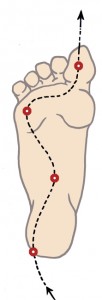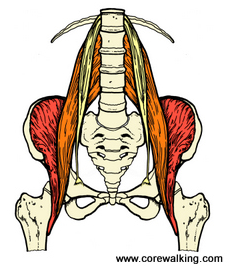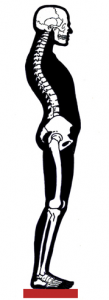Lower back pain can often, though not always, be traced to an issue with the psoas muscle.
The psoas—the body’s most important muscle—helps to hold the spine upright, facilitates good walking patterns, and warehouses all of the body’s unprocessed energy.
The relationship of the psoas to lower back pain encompasses all three of these factors.
Our unprocessed energy can lead to back pain for esoteric reasons that are unrelated to the big toe so I will refer you to other posts on the blog for that information.
But when it comes to walking and standing the big toe is easily connected to incidents of lower back pain as related to the psoas.
Much of this pain can be attributed to a lack of support for the lumbar spine due to the misalignment of the pelvis, legs, and in turn, the psoas.
The psoas attaches to the femur bone towards the back of the inner thigh.
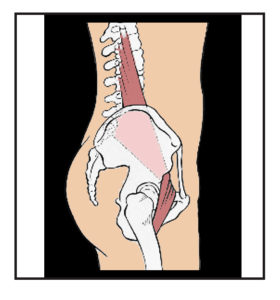
The psoas need to align in the backplane of the body at its top and bottom if it is to successfully hold the spine upright and initiate our gait. To do so the legs need to sit directly under the hips.
When we put weight into the big toe and the inner edge of the foot we activate the inner thigh at the same time.
When we walk correctly the entire weight of the body falls on the big toe to push off to the next step.
Pushing off through the big toe activates the inner thighs and sets the psoas back at its base.
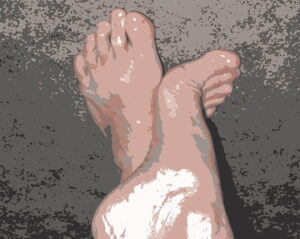
This action also helps the spine to lengthen up. When the inner thigh moves backward, taking the psoas with it, the psoas engages across the rim of the pelvis pulling the lumbar spine forward.
The erector muscles of the spine react to the shortening of the psoas by moving in opposition and extending up the back of the body.
The easiest way to feel the connection between the psoas and the big toe is to stand up with the feet parallel and hip distance apart.
- Roll your weight onto the outside of your feet and you will likely feel the outer thighs engage and your inner thighs lose tone.
- Roll onto the inner edge of the foot particularly the mound of the big toe and feel the inner thighs tone slightly.
The power of this weight shift should not be underestimated. It is this grounding, or lack thereof, that can be responsible for a great deal of lower back pain.
When we bear the weight of the upper body through the outer foot we lose access to our center and to the psoas muscle.
A great deal of the lower back pain that people experience comes from faulty load bearing and compression of the lumbar vertebrae due to poor posture and weight transfer.
Releasing the psoas is essential to developing a balanced body. This all-important muscle is all too often not on radar of doctors and practitioners who can’t point to a reason for your pain.
The psoas might be the key that unlocks years of suffering from pain and trauma.

